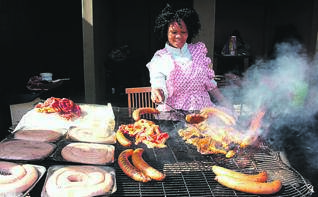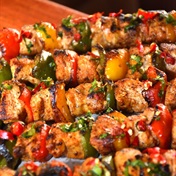
What were the most delicious and disgusting food trends in SA for the period 2010 to 2019? Anna Trapido takes a look
There is a tendency to think that taste trends are a topic for glossy food magazines and the epicurean elite who buy them.
As a result, these trends are often out of touch with what ordinary people actually shop for, grow, cook, serve and eat on a daily basis.
The trends identified often include transient minority fetishes.
Did anyone outside of Cape Town’s media district ever sip on a turmeric latte?
Often, there is an underlying assumption that if middle-class, white men with a professional chef’s qualification don’t know about a food, it does not exist.
In the period 2010 to 2019, offal and insect eating, foraging for wild food, fermenting, craft alcohol, ancient grains and even ugly vegetables were all “discovered” and put forward as epicurean innovations by posh chefs and their foodie fashionista fans.
The fishermen selling snoek heads off the back of a bakkie on the Cape Flats; the farmers snacking on thongolifha insects in Thohoyandou; the Bapong, where pickers of roadside thepe leaves; Tshwane fermented sorghum ting eaters; and Mthata umqombothi and Marico, where mampoer makers would all be surprised to find out they are trendy and/or would feel indignant to know they have been discovered.
As a nation, we grapple with poverty and hunger, but taking away the effects of inflation over the decade, the economy is now 20% larger than it was in 2010. Our eating habits have changed as the economy has grown.
Figures from Stats SA’s annual household surveys pertaining to food insecurity reveal that in 2010, 13% of local households reported regular food deprivation and hunger.
Even with several years of severe drought, by 2018, this measure of hunger had dropped to 10%.
A 2015 article in the SA Journal of Science revealed that in the first half of the decade, on average, South Africans consumed more kilojoules – drinking more sugar-sweetened beverages and eating more processed and packaged food and fewer vegetables – than ever before.
Obesity and lifestyle diseases rose in tandem with these altered eating patterns.
In the South African retail landscape of 2010 to 2019, most eateries were fast food franchises.
While international offerings such as KFC and McDonald’s consumed much of the market, local brands and food genres also adopted the franchise formula.
Afro-Lusitanian piri-piri chicken chain Nando’s ruled the “local is lekker” roost with other South and southern African food forms (think kota, magwinya and shisa nyama), increasingly standardising and replicating our regional lifestyle choices.
Founded in 2012, ChesaNyama grew to 320 outlets nationwide when it listed on the JSE’s alternative exchange in 2016.
The economic downturn hit the brand hard (more than half the franchise ChesaNyama stores closed in 2017), but the popularity of the remaining restaurants indicates a market craving for this food.
This decade has seen an increase in media discussions on the damaging role of cattle and dairy farming as one of the causes of our current climate crisis.
Meat/dairy substitutes are much more readily available than they were 10 years ago, but the shopping baskets of most South Africans seem to be heading the other way.
Stats SA bases monthly Consumer Price Index data on detailed expenditure surveys.
From this we see that there was a significant increase in the purchase of prestige proteins (chicken, red meat, dairy).
Even before the 2017-18 listeria outbreak, eggs and polony as protein sources were declining.
We are becoming a nation of cheese boys and girls – Agri-Expo statistics show that our per capita cheese consumption has almost doubled since 1994.
In South Africa and worldwide, the influence of the internet on our food choices grew dramatically in the period 2010 to 2019.
This widened and democratised the available influences, but it also opened up channels for unregulated, false information – especially in the sphere of food and health.
We are what we eat, and what we are at the end of 2019 is frequently misinformed.
The concept of cocooning – staying at home, insulated from perceived danger – applies as far as eating in goes.
Restaurants are increasingly storefronts for online delivery services. Restaurant architecture and décor are also being designed with a view to pleasing the camera rather than the palate.
We are seeing the extinction of certain ingredients, colours and recipes that cameras struggle to capture.
A new kind of food celebrity emerged in the past decade – not necessarily a skilled cook, but, rather, an attractive amateur with an aspirational lifestyle.
Tracking food trends from 2010 to 2019 reveals that some of the ways in which South Africans ate were dangerous and depressing, while others were delicious and inspiring.
Sometimes the food we ate managed to be both at the same time.
 | ||||||||||||||||||||||||||
Get in touchCity Press | ||||||||||||||||||||||||||
| ||||||||||||||||||||||||||
| Rise above the clutter | Choose your news | City Press in your inbox | ||||||||||||||||||||||||||
| City Press is an agenda-setting South African news brand that publishes across platforms. Its flagship print edition is distributed on a Sunday. |




 Publications
Publications
 Partners
Partners









